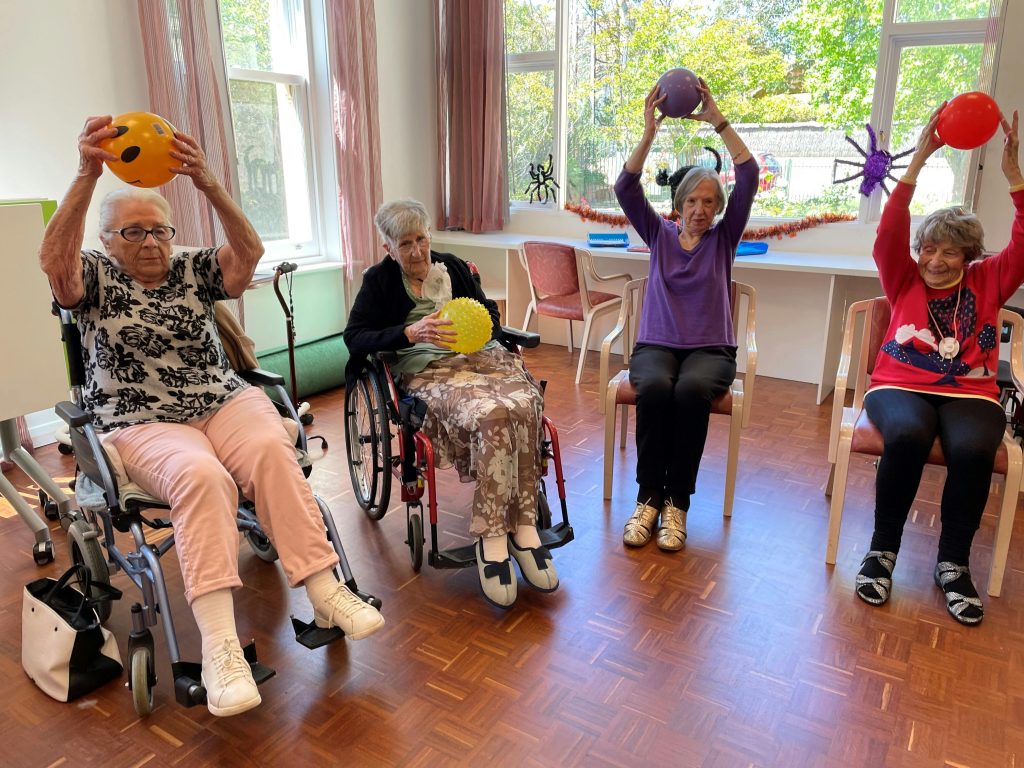Creating a vibrant, connected community is essential in any living environment, especially in assisted living facilities where social interaction plays a crucial role in residents’ overall well-being. Encouraging socialization in assisted living not only enhances their quality of life but also fosters a sense of belonging and support.
The Importance of Socialization in Assisted Living
Socialization is vital for mental, emotional, and physical health. Engaging with others can:
- Reduce feelings of loneliness and isolation.
- Lower the risk of depression and anxiety.
- Enhance cognitive function.
- Improve physical health and longevity.
- Foster a sense of belonging and community.
Strategies to Encourage Socialization
1. Create Engaging Group Activities
Recreational Activities
- Games and Puzzles: Organize regular game nights featuring board games, card games, and puzzles that cater to various interests.
- Sports and Exercise: Offer group exercise classes such as yoga, tai chi, or walking clubs to promote physical health and social interaction.
Cultural and Educational Events
- Book Clubs: Establish book clubs where residents can discuss their favorite books and authors.
- Lectures and Workshops: Invite guest speakers to give talks on various topics of interest or organize skill-building workshops.
Arts and Crafts
- Art Classes: Provide painting, drawing, and crafting sessions to encourage creativity and interaction.
- Music and Dance: Host music appreciation sessions or dance classes to bring residents together through shared interests.
2. Develop Shared Spaces
Comfortable Common Areas
- Lounge Areas: Design comfortable and inviting lounges where residents can relax and chat.
- Outdoor Spaces: Create pleasant outdoor areas with seating and gardens to encourage casual gatherings.
Dining Facilities
- Communal Dining: Encourage residents to dine together by organizing themed meals or potluck dinners.
- Coffee Corners: Set up small coffee stations or tea corners to promote informal social interactions.
3. Foster Resident-Driven Initiatives
Resident Committees
- Activity Planning Committees: Form committees where residents can suggest and help organize activities and events.
- Welcome Committees: Create groups to welcome new residents and help them integrate into the community.
Volunteer Opportunities
- Community Service Projects: Organize volunteer projects that allow residents to contribute to the wider community.
- Peer Support Programs: Establish buddy systems where residents support each other through regular check-ins and companionship.
4. Utilize Technology
Digital Communication Platforms
- Social Networks: Encourage the use of social media groups or forums where residents can share interests and updates.
- Video Chats: Facilitate video calls for residents to connect with family and friends or hold virtual meet-ups.
Online Learning
- Virtual Classes: Offer online classes on various topics to keep residents engaged and connected.
- Webinars and Virtual Events: Organize webinars and virtual events that residents can join from the comfort of their rooms.
5. Promote Special Interest Groups
Hobby Clubs
- Gardening Clubs: Form groups for gardening enthusiasts to share tips and work on communal garden projects.
- Cooking Clubs: Organize cooking classes or recipe-sharing sessions for those interested in culinary arts.
Support Groups
- Health and Wellness: Create support groups for residents dealing with specific health conditions or challenges.
- Life Experience Sharing: Facilitate groups where residents can share stories and experiences, fostering deeper connections.
6. Encourage Intergenerational Interactions
Family Events
- Family Days: Host regular family days where residents can invite their loved ones for activities and meals.
- Intergenerational Programs: Develop programs that bring together different age groups, such as storytime with local children or tech tutorials from younger volunteers.
Community Partnerships
- School Collaborations: Partner with local schools to create intergenerational activities and mentorship programs.
- Volunteer Visits: Arrange visits from community volunteers to engage with residents through various activities.
7. Supportive Staff Practices
Training and Development
- Empathy Training: Provide staff with training on empathy and active listening to better support residents’ social needs.
- Activity Coordination: Hire dedicated activity coordinators to organize and oversee social events and initiatives.
Encouragement and Participation
- Staff Participation: Encourage staff to participate in activities alongside residents to build rapport and foster a sense of community.
- Resident Advocacy: Assign staff members to advocate for residents’ social interests and help facilitate connections.
Implementing a Socialization Program: MECE Framework
Mutually Exclusive
- Physical Activities: Group exercise classes, sports, walking clubs.
- Creative Activities: Arts and crafts, music and dance, writing workshops.
- Intellectual Activities: Book clubs, lectures, educational workshops.
- Social Gatherings: Parties, communal dining, coffee corners.
- Support and Service: Volunteer opportunities, peer support groups.
Collectively Exhaustive
- Activity Variety: Cover a broad spectrum of interests to ensure all residents find something appealing.
- Space Utilization: Utilize all available spaces, both indoor and outdoor, for socialization opportunities.
- Resident Involvement: Involve residents in planning and execution to ensure activities meet their needs.
- Technological Integration: Incorporate technology to enhance social connections, especially for remote interactions.
- Intergenerational Links: Foster connections between residents and younger generations to enrich the community experience.
Conclusion
Building a sense of community through socialization is integral to the well-being of residents in assisted living facilities. By implementing diverse, engaging activities, creating inviting shared spaces, leveraging technology, and fostering intergenerational interactions, you can significantly enhance the quality of life for your residents. Encourage resident-driven initiatives and supportive staff practices to sustain a vibrant, connected community where everyone feels valued and included.



